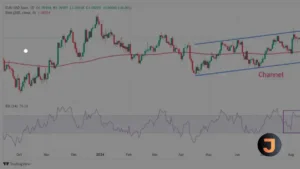March Sees Higher U.S. Consumer Prices, Challenging Rate Cut Expectations
In a recent report by the Labor Department’s Bureau of Labor Statistics (BLS), U.S. consumer prices saw a significant increase in March, primarily driven by rising gasoline and shelter costs. The consumer price index (CPI) rose by 0.4% for the second consecutive month, surpassing economists’ predictions and adding complexity to the Federal Reserve’s interest rate trajectory.
The cost of gasoline and shelter, which includes rents, were the main contributors to the CPI hike, constituting over half of the overall increase. On an annual basis, the CPI surged by 3.5%, a slight uptick from February’s 3.2% rise. This increase is particularly notable as it factors out last year’s lower comparative figures.
Despite the Federal Reserve’s 2% inflation target, the CPI’s current rate considerably exceeds the benchmarks closely monitored for monetary policy decisions. This disparity has led to varied forecasts from economists regarding the timing of potential rate cuts. Some have adjusted their expectations to July, while others maintain a June timeline. A few even speculate that the opportunity for rate cuts may be diminishing.
Fed Chair Jerome Powell has maintained a cautious stance, emphasizing that the central bank is not in a hurry to reduce borrowing costs. Financial markets, as gauged by CME’s FedWatch Tool, indicate a 56.0% chance of a rate cut during the Fed’s June 11-12 policy meeting. Since March 2022, the Fed has hiked the benchmark overnight interest rate by a total of 525 basis points, with the current policy rate held between 5.25%-5.50% since July.
When food and energy components, often considered volatile, are excluded, the core CPI also saw a 0.4% increase in March, consistent with the rises in previous months. The core CPI’s year-on-year growth stood at 3.8%, mirroring February’s figures.
The ongoing debate over inflationary pressures and their impact on future monetary policy continues to hold the attention of economists and market participants alike as they navigate an environment of persistent inflation.






